Welcome to our guide on the beautiful birds found in the Florida Keys! Are you ready to embark on a journey into the vibrant avian world of this stunning region? But first, let us ask you a question: Do you know how many bird species call the Florida Keys home? Prepare to be amazed as we take you on a captivating exploration of over 400 recorded bird species and reveal the hidden treasures of birdwatching in this tropical paradise.
Birdwatching in the Florida Keys
Birdwatching in the Florida Keys is an incredibly popular activity for both beginners and seasoned birders alike. With its diverse range of bird species and numerous birding hotspots, the Florida Keys offers endless opportunities to observe and appreciate the region’s avian treasures. From the northernmost point in Key Largo to the pristine shores of Dry Tortugas National Park, bird enthusiasts are in for a treat.
The backcountry area in the Florida Keys is a haven for birdwatchers. It is home to a plethora of fascinating species, including the elegant roseate spoonbills, impressive ospreys, majestic great white herons, and even the iconic bald eagles. As you explore the mangroves along the water, keep an eye out for colorful kingfishers, elusive green herons, and the unique limpkins that inhabit this lush ecosystem. Pelicans and cormorants are a common sight throughout the Florida Keys, and during the winter months, you may even spot the majestic American white pelicans.
| Key | Birding Hotspots |
|---|---|
| Key Largo | Dagny Johnson Key Largo Hammock Botanical State Park Laura Quinn Wild Bird Sanctuary John Pennekamp Coral Reef State Park |
| Middle Keys | Long Key State Park Curry Hammock State Park Indian Fill Key Pigeon Key Historic District |
| Lower Keys | Bahia Honda State Park West side of the Old Bahia Honda Bridge |
| Other Key Highlights | National Key Deer Refuge on Big Pine Key Key West National Wildlife Refuge Key West Tropical Forest & Botanical Garden Dry Tortugas National Park |
The Overseas Highway, stretching across the Florida Keys, provides more opportunities for birdwatching. Key Largo is an excellent starting point, where you can visit the Dagny Johnson Key Largo Hammock Botanical State Park, Laura Quinn Wild Bird Sanctuary, and John Pennekamp Coral Reef State Park. As you journey south, the Middle Keys offer enticing birding stops, including Long Key State Park, Curry Hammock State Park, Indian Fill Key, and the historically significant Pigeon Key. In the Lower Keys, be sure to explore Bahia Honda State Park and the west side of the Old Bahia Honda Bridge for memorable birdwatching experiences. For a truly unique adventure, a visit to the remote Dry Tortugas National Park is well worth it.
Whether you’re a casual observer or a dedicated photographer, birdwatching in the Florida Keys promises excitement and discovery. Take in the breathtaking landscapes while keeping an eye out for the incredible variety of bird species that call this paradise home. Plan your birding excursions wisely, visit the renowned hotspots, and don’t forget to explore the hidden gems along the way. The Florida Keys truly offers an unparalleled birdwatching experience.
Best Birdwatching Stops on the Overseas Highway
If you’re looking for the best birdwatching spots in the Florida Keys, the Overseas Highway offers incredible opportunities to observe a variety of bird species in their natural habitats. Whether you’re interested in birding tours or capturing stunning bird photography, these stops along the highway are sure to satisfy your passion for avian exploration.
Key Largo
As your first stop on the journey, Key Largo provides several remarkable birdwatching locations. Visit Dagny Johnson Key Largo Hammock Botanical State Park, where you’ll find a diverse range of bird species amidst the lush tropical vegetation. The park’s extensive trails offer plenty of opportunities for bird photography as you encounter colorful and unique avian residents. Don’t miss the chance to explore the Laura Quinn Wild Bird Sanctuary and John Pennekamp Coral Reef State Park, both renowned for their rich birdlife.
Middle Keys
Continuing south along the Overseas Highway, the Middle Keys provide additional birding hotspots to explore. Stop at Long Key State Park, known for its pristine beaches and coastal hammocks, where you can discover a variety of shorebirds and seabirds. Curry Hammock State Park offers a similar coastal experience with opportunities to spot migratory and resident bird species throughout the year. Indian Fill Key and Pigeon Key Historic District are also worth a visit, boasting impressive birdwatching opportunities and captivating historical sites.
Lower Keys
In the Lower Keys, be sure to visit Bahia Honda State Park, where the stunning natural surroundings provide an ideal backdrop for observing both land and water birds. Additionally, the west side of the Old Bahia Honda Bridge offers a fantastic vantage point for bird photography. For a unique experience, explore the National Key Deer Refuge on Big Pine Key, home to a variety of bird species and the endangered Key deer. Key West National Wildlife Refuge and Key West Tropical Forest & Botanical Garden offer a tranquil setting for birdwatching enthusiasts. Finally, consider a visit to the famous Dry Tortugas National Park, located 70 miles west of Key West, which attracts a wide array of migratory birds.
Immerse yourself in the beauty of the Florida Keys as you explore these best birdwatching stops along the Overseas Highway. With their diverse habitats and abundant birdlife, these locations provide incredible opportunities for birdwatchers and photographers alike.

Rare Birdwatching in the Florida Keys
The Florida Keys is home to several rare and elusive bird species that birdwatchers strive to spot. These unique birds add an element of excitement and rarity to any birdwatching experience in the region. The Key West Quail-Dove, Black-whiskered Vireo, Mangrove Cuckoo, American Flamingo, Reddish Egret, and Würdemann’s Heron are among the harder-to-find species that require patience and keen observation skills to locate and identify.
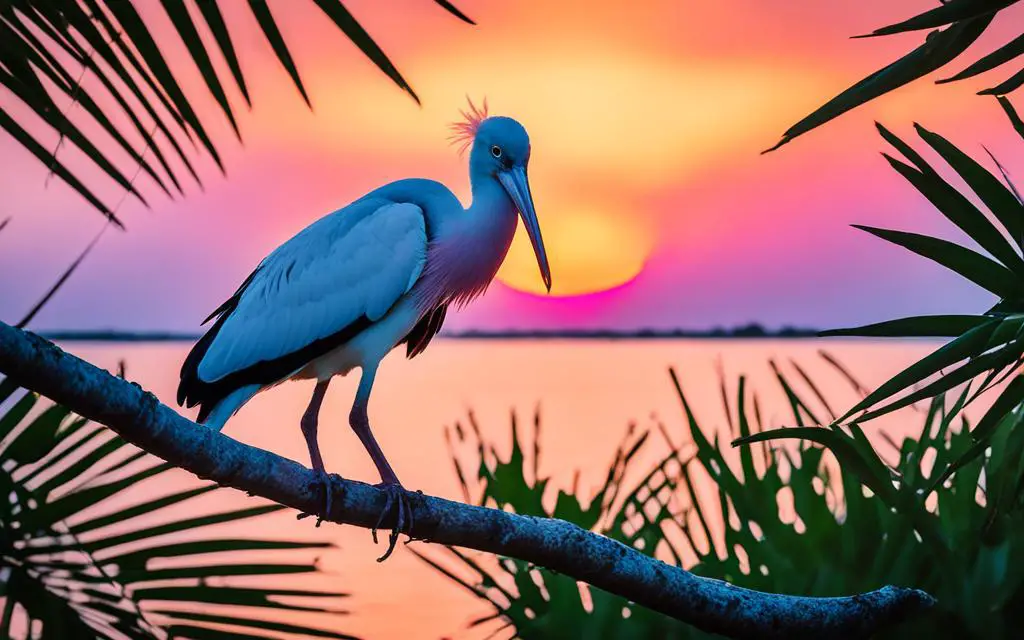
Common but Cool Birdwatching in the Florida Keys
While exploring the Florida Keys, you’ll encounter not only rare bird species but also a wide variety of common yet captivating birds. These native birds of the Florida Keys contribute to the vibrant birdlife that thrives in the region. Whether you’re an avid birdwatcher or a casual observer, these common birds are sure to pique your interest and leave you in awe.
White-crowned Pigeon
The White-crowned Pigeon is a frequent sight in the Florida Keys. With its distinct white crown and soft gray plumage, this pigeon adds elegance to the region’s bird populace. It can often be found perched in trees or feeding on fruits and berries. Keep your eyes peeled for this beautiful bird as you explore the Florida Keys’ natural wonders.
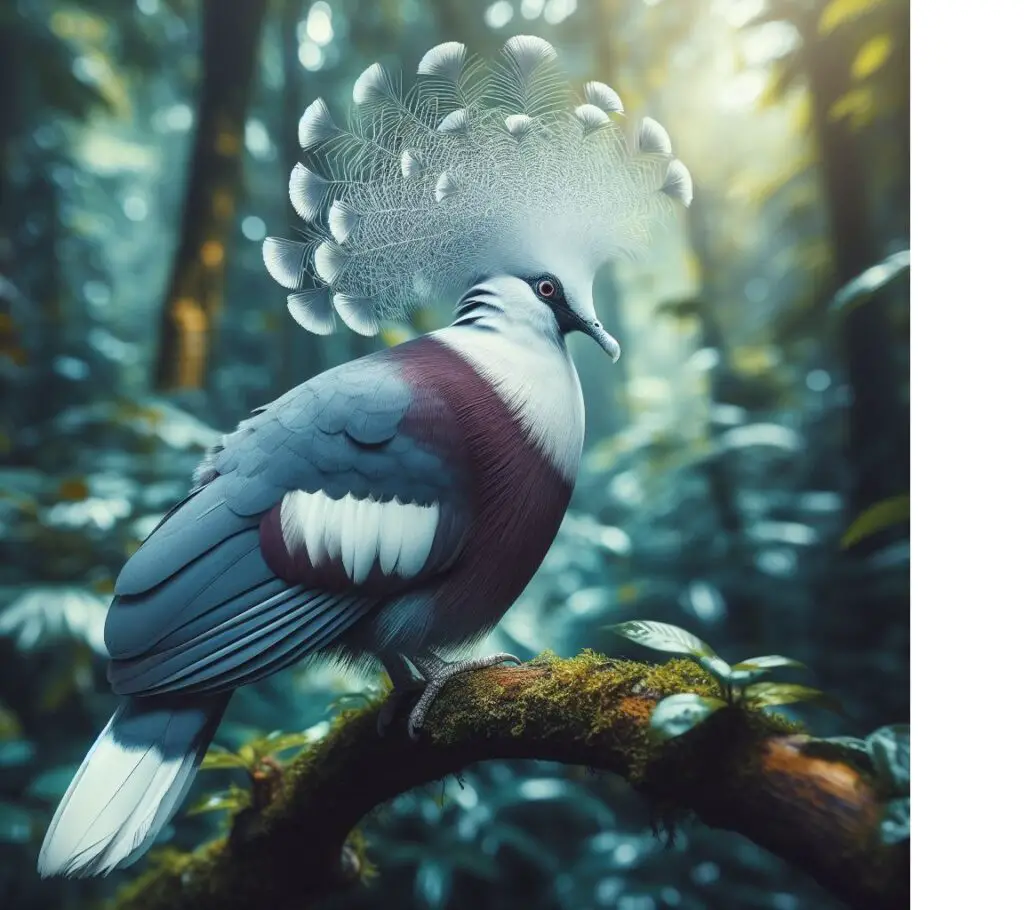
Magnificent Frigatebird
A visit to the Florida Keys wouldn’t be complete without spotting the Magnificent Frigatebird. Known for its striking appearance and remarkable wingspan, this seabird effortlessly soars through the skies. Keep an eye on the horizon, and you may witness their grace in flight or catch a glimpse of a nesting colony on the offshore islands.
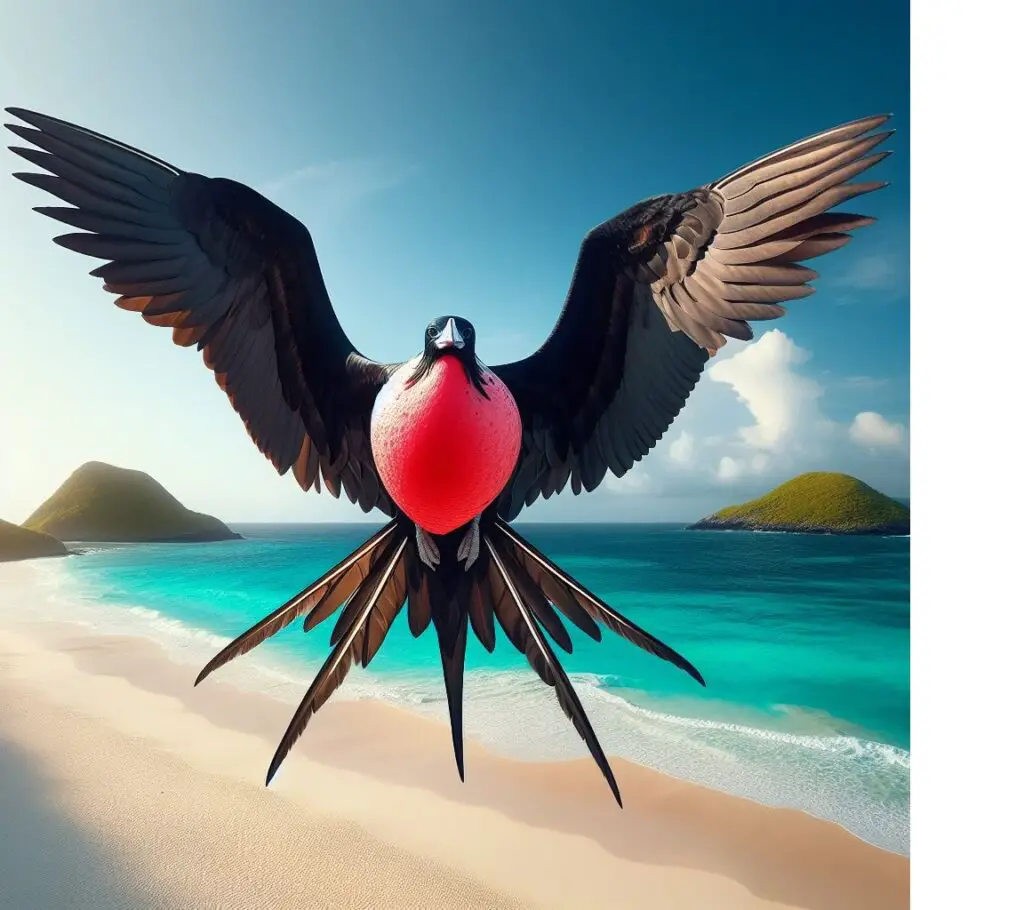
Roseate Spoonbill
The Roseate Spoonbill is a spectacle of pink plumage and unique spoon-shaped bill. These wading birds can often be found foraging in shallow waters, sweeping their bills from side to side to capture small aquatic creatures. Spotting a flock of these elegant birds in flight or engaging in their feeding behaviors is a truly memorable experience.
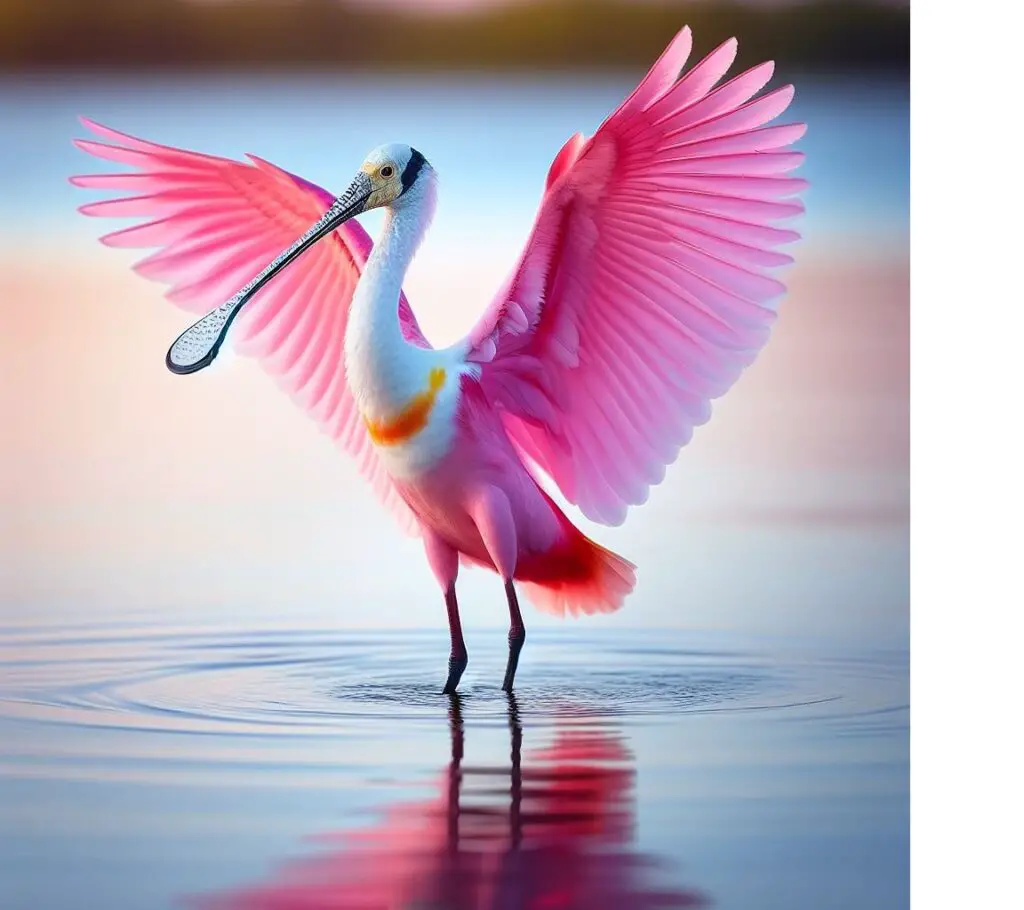
Gray Kingbird
The Gray Kingbird is a common bird species that can be found perched on branches or hovering in the air. With its sleek gray plumage and striking white markings on its head and tail, this songbird adds a touch of charm to the Florida Keys’ avian population. Listen closely, and you may hear its melodious calls echoing through the trees.
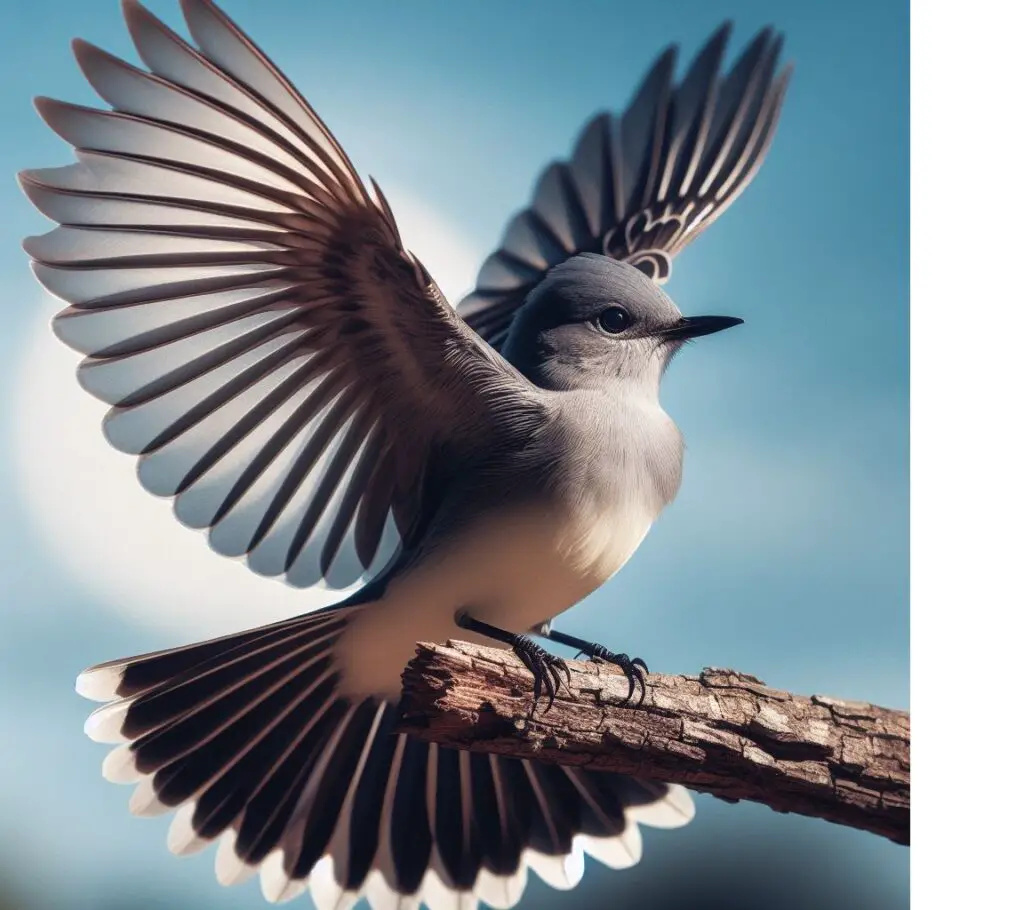
Key West Piping Plover
The Key West Piping Plover is a small shorebird that frequents the sandy beaches and coastal areas of the Florida Keys. With its sand-colored plumage and distinctive piping call, this bird blends seamlessly into its surroundings. Observing these delicate plovers scurrying along the shoreline is a delightful sight.
These are just a few examples of the common but cool bird species you can encounter during your birdwatching adventures in the Florida Keys. Keep your binoculars handy and your curiosity piqued, as there are countless other native birds waiting to be discovered.
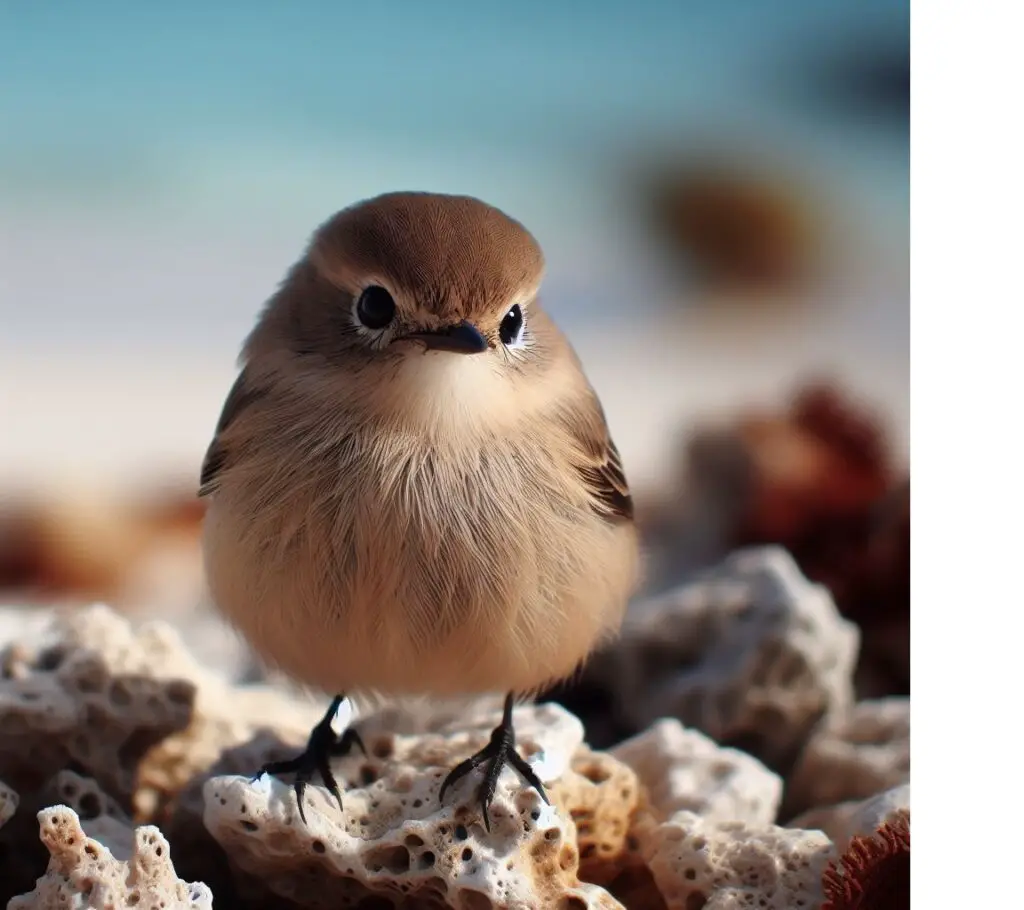
| Bird Species | Appearance | Habitat | Behaviors |
|---|---|---|---|
| White-crowned Pigeon | Gray plumage with white crown | Trees, forested areas | Feeding on fruits and berries |
| Magnificent Frigatebird | Black plumage, long wingspan | Coastal areas, offshore islands | Soaring in the sky, nesting in colonies |
| Roseate Spoonbill | Pink plumage, spoon-shaped bill | Mangroves, wetlands, shallow waters | Foraging for aquatic creatures |
| Gray Kingbird | Gray plumage with white markings | Trees, open areas | Perching, hovering, melodious calls |
| Key West Piping Plover | Sand-colored plumage | Sandy beaches, coastal areas | Scurrying along the shoreline |
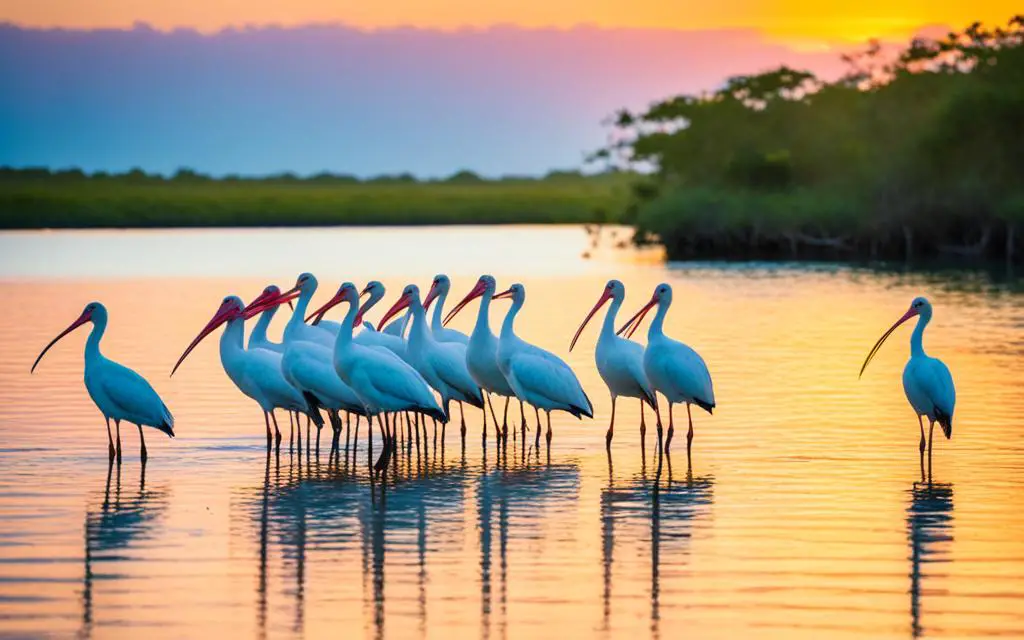
Unique Birding Experiences in the Florida Keys
The Florida Keys offer unique birding experiences that are sure to delight birdwatchers of all levels. From witnessing bird migration to joining guided birding tours, there are plenty of opportunities to discover the avian wonders of this beautiful region.
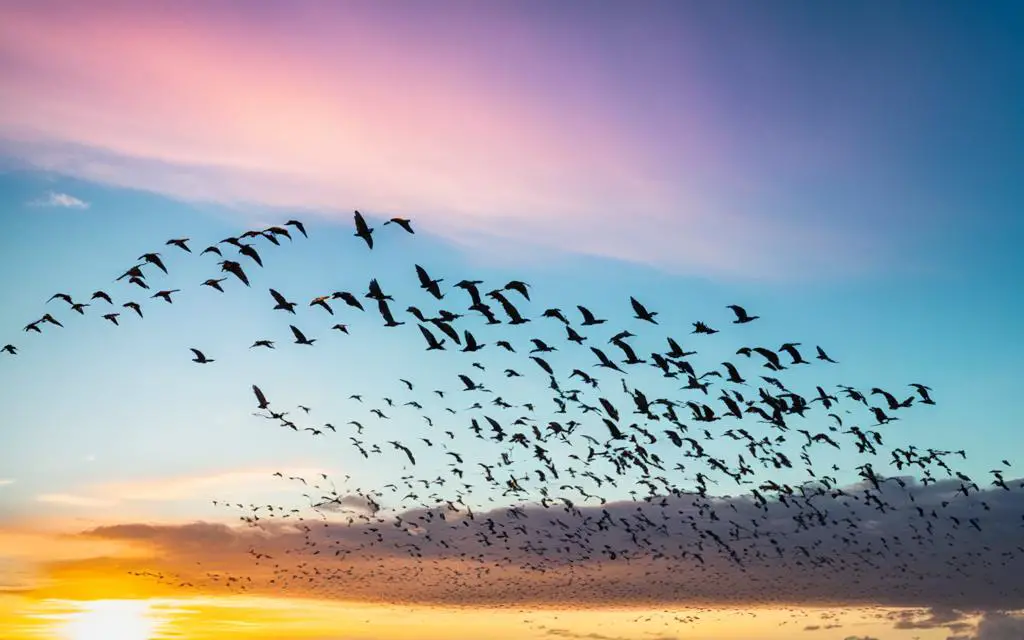
One of the most exciting aspects of birdwatching in the Florida Keys is the bird migration that takes place during the winter months. As migratory birds make their way to the region, birdwatchers have the chance to observe species that are not typically found in Florida. This influx of birds adds a unique and dynamic element to the birding experience in the Florida Keys.
To make the most of your birdwatching adventure, consider joining birding tours in the Florida Keys. These tours are led by knowledgeable guides who are familiar with the birding hotspots and can provide valuable insights. Whether you’re a beginner or an experienced birder, these tours offer a great way to explore the diverse bird species of the Florida Keys.
During the birding tours, you’ll have access to prime birding locations where you can observe a wide variety of bird species in their natural habitats. The guides will help you identify different species and share interesting facts about their behaviors and migratory patterns. It’s a fantastic opportunity to learn more about the birds of the Florida Keys while enjoying the scenic beauty of the region.
Bird Migration in the Florida Keys
The Florida Keys serve as an important stopover for many migratory bird species as they journey between their breeding and wintering grounds. The unique geography of the region, with its coastal habitats and abundant food sources, attracts birds from all over the world.
| Migratory Species | Popular Time of Year |
|---|---|
| American Redstart | Fall and Spring |
| Painted Bunting | Spring |
| Swainson’s Warbler | Spring |
| Black-throated Blue Warbler | Fall and Spring |
| Bobolink | Fall and Spring |
| Indigo Bunting | Spring |
These are just a few examples of the many migratory bird species that can be spotted during their annual journeys through the Florida Keys. Witnessing their arrival and departure is a truly awe-inspiring experience and a testament to the importance of the region for bird migration.
Whether you choose to explore the Florida Keys during the migratory seasons or join a birding tour, you’re bound to have unforgettable encounters with the avian wonders that call this region home.
Florida Keys Bird Identification
Identifying birds in the Florida Keys can be a rewarding challenge. With over 400 recorded bird species in the region, it’s essential for birdwatchers to have reliable resources for accurate identification. Thankfully, there are numerous tools and guides available to assist in the process.
A great starting point for bird identification is the online tools provided by Cornell Lab of Ornithology and Audubon. These websites offer extensive databases of bird species, allowing birdwatchers to compare their photos and observations with existing records. By inputting specific characteristics such as size, color, and behavior, these tools can help narrow down the potential bird species.
Another helpful resource is field guides that focus on Florida birds. These guides provide detailed descriptions, illustrations, and range maps of the unique bird species found in the Florida Keys. By having a physical guide on hand during birdwatching excursions, birdwatchers can refer to it for quick identification on the field.
When identifying birds in the Florida Keys, paying attention to key features such as plumage color, shape, bill size, and behavior can be instrumental in accurate identification. It’s also important to note the specific habitat where the bird was spotted, as different species have preferences for certain habitats, such as the mangroves, beaches, or wetlands.
General Bird Identification Tips
Here are some general tips to enhance your bird identification skills:
“Observe the bird’s coloration, size, and shape.”
“Listen carefully to its vocalizations.”
“Note its behavior, such as feeding habits or flight pattern.”
“Take clear photographs from different angles to capture important details.”
Remember, bird identification can sometimes be challenging, especially with similar-looking species. It’s always helpful to consult with experienced birdwatchers or join local birdwatching groups for additional guidance and insights.
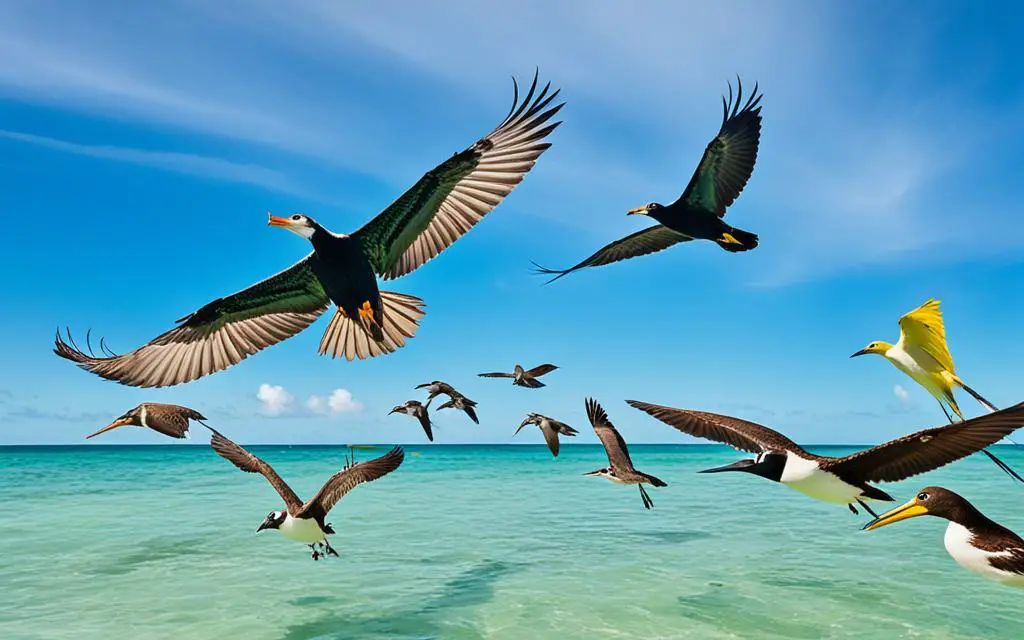
By using these resources and tips, birdwatchers can confidently identify the diverse bird species they encounter in the beautiful Florida Keys.
Bird Conservation in the Florida Keys
Bird conservation plays a vital role in preserving the unique bird species that call the Florida Keys home. The region’s diverse ecosystem is home to a variety of native birds, some of which are endangered or threatened due to habitat loss and other factors.
Conservation organizations, such as the Great White Heron National Wildlife Refuge, are at the forefront of efforts to protect the breeding and nesting areas of these birds. By creating and maintaining safe havens for our feathered friends, these organizations help ensure the survival of these incredible species for generations to come.
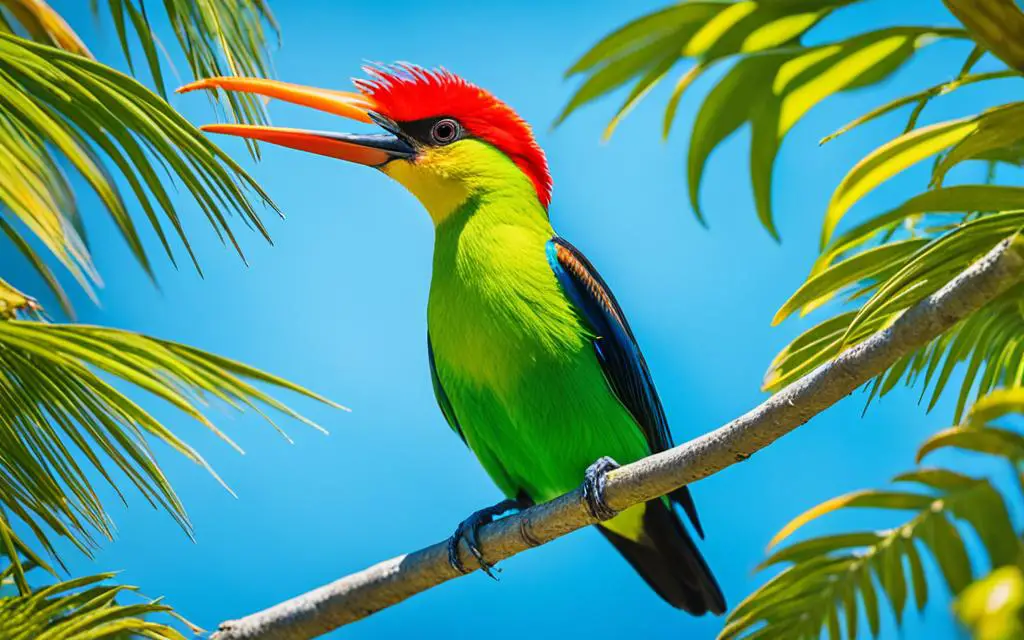
Supporting these conservation initiatives is essential for the preservation of native bird populations in the Florida Keys. As birdwatchers, we can contribute by spreading awareness, volunteering, and donating to these organizations dedicated to bird conservation.
“Preserving the habitat of endangered birds in the Florida Keys is a collective responsibility. Let’s work together to protect these magnificent creatures and their natural environment.”
Threats to Birds in the Florida Keys
The beautiful bird species in the Florida Keys face a range of threats that put their populations at risk. These threats include habitat loss, climate change, and the introduction of invasive species. The fragile ecosystems of the Florida Keys are vulnerable to human activities and natural disasters, leading to significant challenges for bird conservation efforts in the region.
Habitat loss: The rapid development and urbanization in the Florida Keys have resulted in the destruction and fragmentation of crucial bird habitats. Wetlands, mangroves, and coastal areas, which are vital for nesting, feeding, and resting, have been significantly impacted by human activities. As a result, many bird species have lost their preferred habitats, leading to declines in their populations.
Climate change: The rising sea levels, increased temperatures, and extreme weather events associated with climate change pose significant threats to the bird species in the Florida Keys. As their habitats are altered or destroyed, birds must adapt to new conditions or face displacement and loss of vital resources such as food and nesting sites. Climate change also disrupts bird migration patterns, affecting the timing and availability of food sources along their routes.
Invasive species: The introduction of non-native species, such as pythons, poses a severe threat to the bird populations in the Florida Keys. Pythons, which were introduced as pets but have since established breeding populations in the region, prey on native birds and their eggs. The presence of pythons has contributed to declines in bird populations, particularly for ground-nesting species.
To protect the endangered birds in the Florida Keys, conservation efforts must address these threats and implement measures to preserve and restore habitats, mitigate the impacts of climate change, and control invasive species. Collaborative initiatives between conservation organizations, government agencies, and local communities are essential for the long-term survival of these unique bird species.
In order to ensure the survival of these beautiful birds, it is imperative that we take immediate action to protect and restore their habitats, reduce greenhouse gas emissions, and prevent the spread of invasive species. Through dedicated conservation efforts, we can safeguard the future of these endangered bird populations in the Florida Keys.
Threats to Bird Populations in the Florida Keys
| Threat | Description |
|---|---|
| Habitat loss | Urbanization and human activities have led to the destruction and fragmentation of bird habitats in the Florida Keys. |
| Climate change | Rising sea levels, increased temperatures, and extreme weather events pose challenges for bird species in the region. |
| Invasive species | The introduction of non-native species, such as pythons, preys on native birds and their eggs, impacting bird populations. |
By addressing these threats and working towards their conservation, we can protect the unique bird species of the Florida Keys for generations to come.
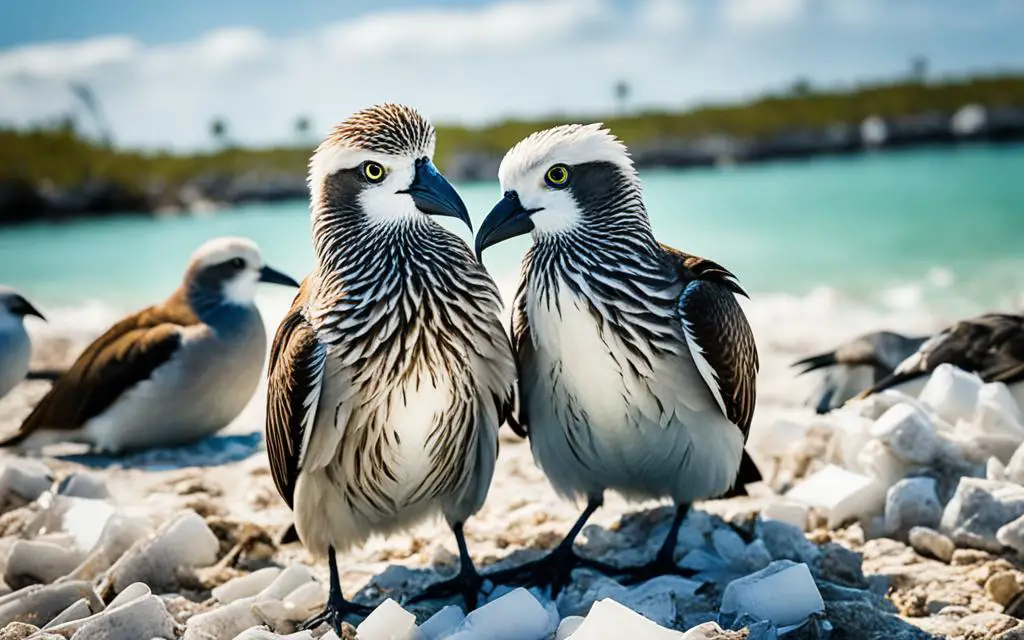
Birding Ethics in the Florida Keys
When engaging in birdwatching activities in the Florida Keys, we must prioritize birding ethics to ensure the well-being of the birds and their habitats. Here are some guidelines to follow:
1. Respect Natural Behaviors and Habitats: Observe birds from a safe and respectful distance, avoiding any disruption to their natural behaviors. Do not approach nesting or breeding areas, as this can cause stress to the birds and potentially harm their eggs or young.
2. Choose Reputable Birding Tour Operators: If participating in birding tours in the Florida Keys, select operators that prioritize the conservation and protection of birds. Ensure that the tours adhere to ethical practices and minimize their impact on the environment.
3. Minimize Disturbance: Keep noise levels low and avoid sudden movements that may startle or frighten the birds. Be mindful of your surroundings and other birdwatchers, maintaining a peaceful and calm atmosphere for both birds and humans.
4. Leash Pets: If you bring pets along for birdwatching trips, make sure they are leashed and under control. Unleashed pets can disturb or chase birds, leading to unnecessary stress and potential harm to the avian residents of the Florida Keys.
5. Leave No Trace: Practice responsible tourism by leaving no trace of your visit. Dispose of waste properly, stay on designated paths or trails, and avoid leaving behind any litter. By doing so, we can help protect the delicate ecosystems that support the diverse birdlife in the Florida Keys.
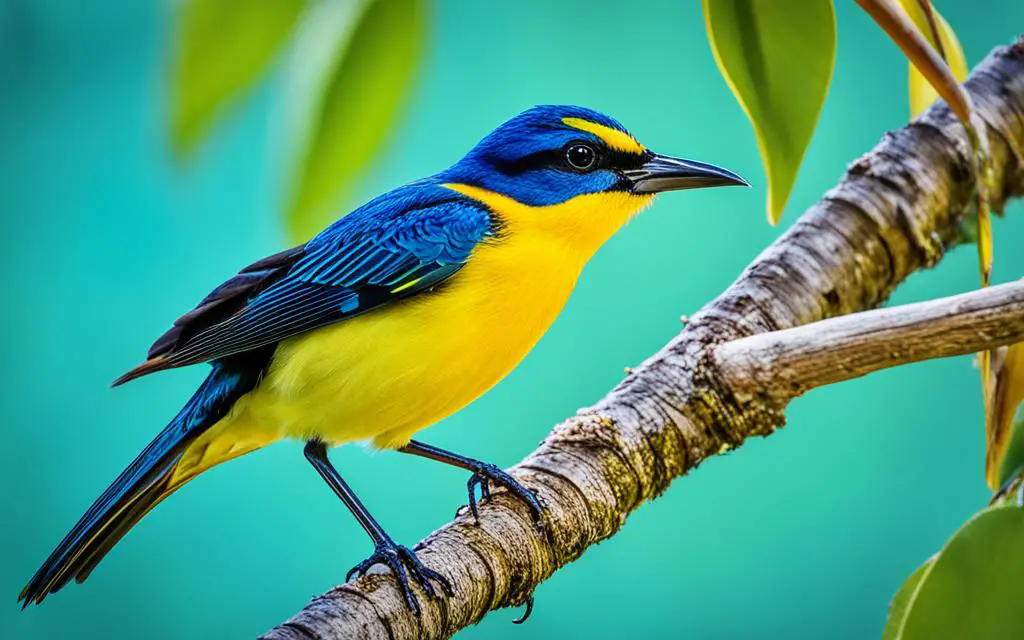
“Respecting the birds’ natural behaviors and habitats is essential for their well-being and conservation. Let’s ensure that our passion for birdwatching in the Florida Keys goes hand in hand with responsible and ethical practices.”
Birding Ethics Checklist
| Guidelines | Actions |
|---|---|
| Respect Natural Behaviors and Habitats | Observe from a safe distance Avoid impacting nesting areas |
| Choose Reputable Birding Tour Operators | Select operators that prioritize bird conservation Ensure ethical practices are followed |
| Minimize Disturbance | Keep noise levels low Avoid sudden movements |
| Leash Pets | Keep pets under control and leashed Prevent chasing or disturbing birds |
| Leave No Trace | Dispose of waste properly Stay on designated paths Avoid littering |
Birdwatching Tips for the Florida Keys
Enhance your birdwatching experience in the Florida Keys with these valuable tips. Whether you’re a beginner or an experienced birder, following these suggestions will increase your chances of spotting a wide variety of bird species and capturing memorable photographs.
1. Bring Binoculars or a Telephoto Lens
For closer observation and photography, it’s essential to have the right equipment. Binoculars allow you to observe birds from a distance without disturbing them, while a telephoto lens enables you to capture detailed and high-quality bird photographs.
2. Visit Key Birding Hotspots
Make the most of your birdwatching adventure by exploring the recommended birding hotspots mentioned earlier in the article. From the unspoiled backcountry areas to the scenic Overseas Highway, these locations provide excellent opportunities to spot a diverse range of bird species in their natural habitats.
3. Learn to Identify Common Bird Species
Expand your knowledge of the native bird species found in the Florida Keys. Familiarize yourself with the common birds you are likely to encounter, paying attention to their distinctive features and behaviors. This will enhance your overall birdwatching experience and enable you to appreciate the unique characteristics of each species.
4. Be Patient and Observant
Birdwatching requires patience and attentiveness. Take the time to observe your surroundings, listen for bird calls, and scan the trees, bushes, and water bodies for any signs of bird activity. The more patient and observant you are, the more likely you are to spot rare and elusive bird species.
5. Consider Guided Birding Tours
Joining guided birding tours led by experienced naturalists can greatly enhance your birdwatching experience. These experts have extensive knowledge of the local bird species and can provide valuable insights into their behaviors, habitats, and migration patterns. They also know the best locations to find specific bird species, increasing your chances of spotting a wide variety of birds.
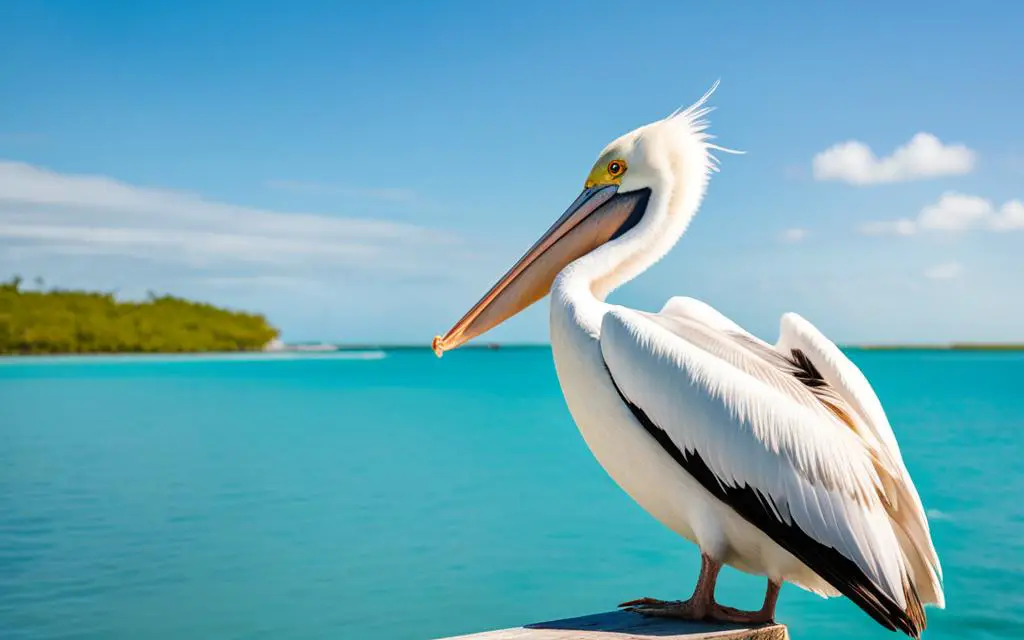
Improve your birdwatching skills in the Florida Keys with these helpful tips. By being well-prepared, visiting birding hotspots, learning to identify common species, staying patient and observant, and considering guided birding tours, you’ll have a rewarding and memorable birdwatching experience in this stunning natural paradise.
Conclusion
The Florida Keys are a birdwatching paradise, offering a wealth of beautiful bird species to discover. From vibrant wading birds to unique migratory species, the region is a haven for nature enthusiasts and bird lovers alike. With over 400 recorded species, there is no shortage of opportunities to appreciate the diverse avian life that calls the Florida Keys home.
Exploring the Florida Keys provides an unforgettable birdwatching adventure, whether you’re a seasoned birder or a beginner. The region is teeming with birding hotspots, from Key Largo to Dry Tortugas National Park, offering ample opportunities to observe and photograph native and migratory birds in their natural habitats. The unspoiled backcountry and mangrove areas provide a glimpse into the wide variety of bird species, including roseate spoonbills, osprey, great white herons, and bald eagles.
Conservation efforts play a crucial role in preserving the unique and endangered bird species found in the Florida Keys. By supporting organizations such as the Great White Heron National Wildlife Refuge, we can contribute to the protection of breeding and nesting areas for these beautiful birds. It is essential to respect birding ethics, maintain a safe distance, and avoid disturbing their habitats to ensure their continued survival.
Whether you’re captivated by the rare and elusive species or fascinated by the common yet captivating birds, birdwatching in the Florida Keys offers a rewarding and enriching experience. The vibrant birdlife, the unique birding experiences, and the breathtaking scenery make the Florida Keys a truly remarkable destination for birdwatching enthusiasts. So grab your binoculars, visit the Florida Keys, and immerse yourself in the beauty of the avian world.
FAQ
What makes the Florida Keys a great destination for birdwatching?
The Florida Keys is home to a diverse range of beautiful bird species, with over 400 recorded species. With its abundance of bird species and various birding hotspots, the Florida Keys offers a captivating birdwatching experience.
Where are the best birdwatching spots in the Florida Keys?
The Florida Keys offer a variety of birding hotspots, including Dagny Johnson Key Largo Hammock Botanical State Park, John Pennekamp Coral Reef State Park, Bahia Honda State Park, and Dry Tortugas National Park. These locations provide ample opportunities to spot a wide variety of bird species.
Are there any rare bird species to watch out for in the Florida Keys?
Yes, the Florida Keys is home to several rare and elusive bird species, including the Key West Quail-Dove, Black-whiskered Vireo, Mangrove Cuckoo, American Flamingo, Reddish Egret, and Würdemann’s Heron. Spotting these unique species requires patience and keen observation skills.
What are some common bird species found in the Florida Keys?
The Florida Keys are home to a variety of common but fascinating bird species, such as the White-crowned Pigeon, Magnificent Frigatebird, Roseate Spoonbill, Gray Kingbird, and Key West Piping Plover. These birds, although commonly found, exhibit unique characteristics and behaviors that make them a joy to observe.
What unique birding experiences can be had in the Florida Keys?
The Florida Keys offer unique birding experiences, including witnessing bird migration during the winter months and joining birding tours led by knowledgeable guides. These experiences provide opportunities to observe different species and gain valuable insights into the avian world.
How can I identify birds in the Florida Keys?
To identify birds in the Florida Keys, you can use online tools provided by Cornell Lab of Ornithology and Audubon, which allow you to compare your photos and observations with extensive databases of bird species. Field guides specific to Florida birds can also be helpful in identifying the unique bird species found in the region.
What conservation efforts are in place to protect birds in the Florida Keys?
Bird conservation efforts in the Florida Keys are crucial in preserving the unique bird species found in the region. Organizations like the Great White Heron National Wildlife Refuge play a vital role in protecting breeding and nesting areas for endangered birds. Supporting these conservation initiatives helps preserve the native bird populations.
What are the threats to bird populations in the Florida Keys?
Bird populations in the Florida Keys face threats such as habitat loss, climate change, and the introduction of invasive species. The presence of pythons, in particular, has had a significant impact on bird populations, leading to the decline of certain species. Conservation efforts aim to address these threats and protect birds’ habitats.
What are the birding ethics to follow in the Florida Keys?
When birdwatching in the Florida Keys, it is important to adhere to birding ethics. Respect birds’ natural behaviors and habitats, maintain a safe distance, and avoid disturbing their nests and breeding areas. Choose reputable birding tour operators that prioritize the well-being of birds and their habitats.
What tips can enhance my birdwatching experience in the Florida Keys?
To enhance your birdwatching experience in the Florida Keys, it is recommended to bring binoculars or a telephoto lens for closer observation and photography. Visit key birding hotspots mentioned earlier to increase your chances of spotting various bird species. Learn to identify common bird species found in the region and be patient and observant to spot rare and elusive birds. Consider joining guided birding tours led by experienced naturalists for a more comprehensive birding experience.
Why should I visit the Florida Keys for birdwatching?
The Florida Keys offer a paradise for birdwatchers with its diverse range of beautiful bird species, unique birding experiences, and conservation efforts. Whether you’re a seasoned birder or a beginner, exploring the Florida Keys will provide you with countless opportunities to appreciate the vibrant birdlife and create lasting memories.
Source Links
- https://2traveldads.com/birdwatching-in-the-florida-keys/
- https://floridahikes.com/identifying-birds-in-florida
- https://www.florida-keys-vacation.com/Wild-Birds.html

My name is Shane Warren, the author behind Your Bird Buddy – your ultimate guide to the wonderful world of birds! Unleash your inner avian explorer as we delve into a vibrant library of knowledge dedicated to all things feathered. From learning about diverse bird species from across the globe to understanding their captivating habitats and behaviors, I’m here to fuel your passion for these magnificent creatures. Not only that, but I also provide valuable insights on being a responsible and informed pet bird owner. Join our vibrant community and let’s celebrate the feathered wonders of the world together – one chirp at a time. And be sure to join our Your Bird Buddy Community over on Facebook!

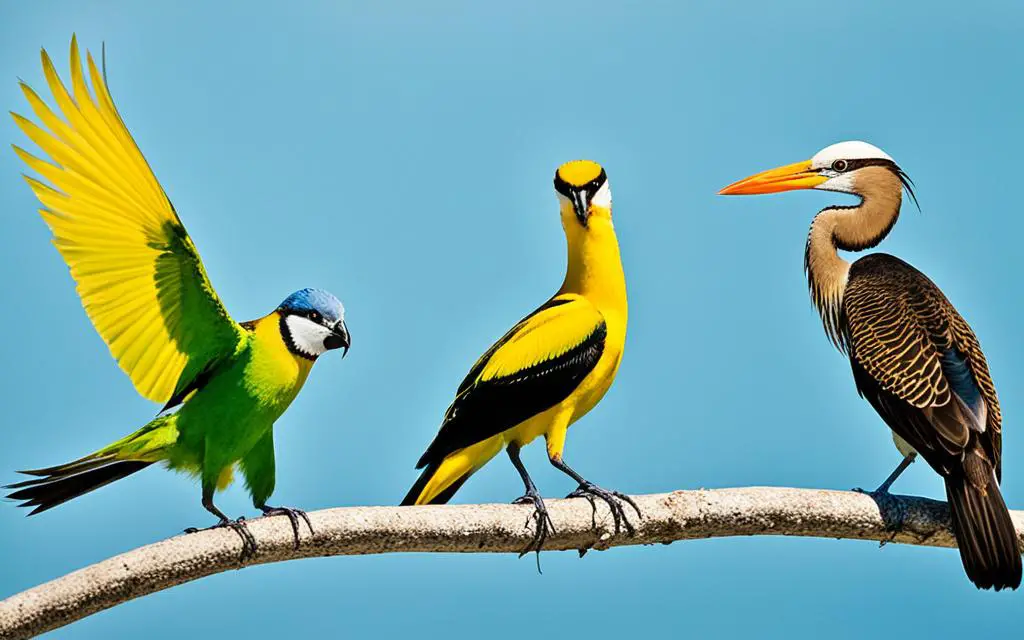
Comments are closed